A day after the result of the #EUref came in, Mrs Stroke Bloke and I hopped on a train to London. Like the narrator of this wee ditty:
https://www.youtube.com/watch?v=Gy8d1bQYvmM
“Smoke lingers ’round your fingers / Train, heave on to Euston…”
(Smiths sceptics might find the above performance surprisingly muscular)
It was, y’see, an opportunity to check out an exclave of the soon-to-be nation of #Scotlond. By this time, Scotland’s First Minister had already reached out to the Mayor of London to discuss how their remain-voting areas could ameliorate the impact of Brexit.
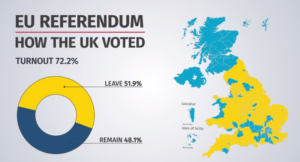
I’m joking, of course. We were heading south to see friends who had lived in England’s capital for some years before relocating to L.A. He’s German, and she’s an American who works in finance, so the chance of them returning for any extended period any time soon is presumably remote. Thanks, Boris.
I was also hoping to see the new public art structure at Kew Gardens, The Hive.
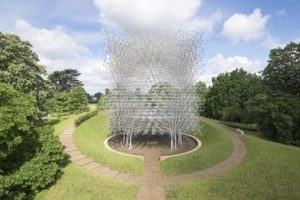
The Hive was inspired by scientific research into the health of bees. Designed by UK based artist Wolfgang Buttress, it was originally created as the centrepiece of the UK Pavilion at the 2015 Milan Expo. It sounds absolutely fascinating.
But we didn’t have time to see The Hive, because I also wanted to check out Switch House, the new extension to the Tate Modern gallery on the site of the old Bankside Power Station.
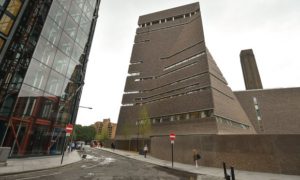
We saw some great stuff there, starting off with a collection of Jasper Morrison’s optimistic furniture and products that use advanced technology to develop mass-manufactured products. As we made our way through the massive halls of Switch House, I began to feel it was a very democratic space, with plenty of room for masses of viewers who had gained admittance for free (assuming they didn’t want to see any of the temporary special exhibitions).
But as we made our way through the galleries, my mood changed. Even in its second week open to the public it was certainly easier to get though Switch House than it had been to move through Manhattan’s MoMA in the weeks after its redesign opened in late 2004.
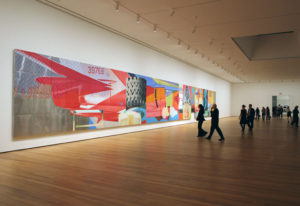
Still, one of the things I loved about MoMA – and you can see it in the picture above – is the way that the gallery walls appear to float just above the floor, giving a sense of lightness to the interior of a monolithic Midtown building.
This isn’t what the architects of Switch House are going for. As Rowan Moore notes in his review for The Observer.
That’s all very appropriate. Walking through the Tate Modern, we came across pieces reflecting on sexism, racism, Nazism, South American violence and political dysfunction, and many of the other horrors of the modern age.

The sheer mass of this stuff did become overwhelming – particularly in the wake of recent events, and the reports of racism through Britain in the aftermath of the referendum. My oft-made recent reflection that Hey, it doesn’t feel as bad as the Eighties yet was crumbling, and it was a relief to step out onto the tenth floor viewing terrace.
For a second.
As Rowan Moore saw, looking out from the terrace, the visitor sees an inadvertent art installation:
Across the street is a stack of the glass-walled living spaces of the residential development called Neo Bankside, almost all furnished with the trappings of tasteful contemporary living: Eero Saarinen’s Tulip table (three times), citrus fruit on stainless steel, a proliferation of circular tables and rugs that try to adapt to the building’s obsessive triangular geometry, migrant domestic help vacuuming the wooden floors. Private worlds achieved at some expense are exposed with perfect transparency.
And within these residences, we didn’t see a single resident. Looking out across a London sprawling around 360 degrees, we did see a panorama of cranes.
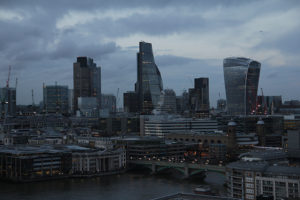
Who was going to fill Neo Bankside now? Who was going to fill the offices and the other high-end residences the cranes were building, as the international banks made plans to evacuate to Dublin and Paris and Frankfurt and, who knows, Edinburgh? Who was going to clean them? Were the areas of the vast halls of Switch House so democratic after all, or could that space and money be put to better use as the British Isle continued to suffer a housing shortage? What was the source of all the money that had paid for all the building all across London, now, in past decades and centuries? Why had it coalesced and clotted here?
Thanks, Tate Modern.
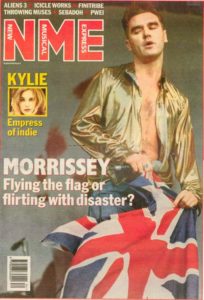





I haven’t visited the majority of those places, but your descriptions make me feel as if I have. Well done and, as always, a pleasure to read. Enchanting, really.
How lovely to hear. Thanks as always, Joyce!
Again, folks, if you enjoy apoplectic.me, I commend Joyce’s Tales of a Stroke Patient – it’s on fire right now!
Burning with endless fuel! Thanks, Ricky!